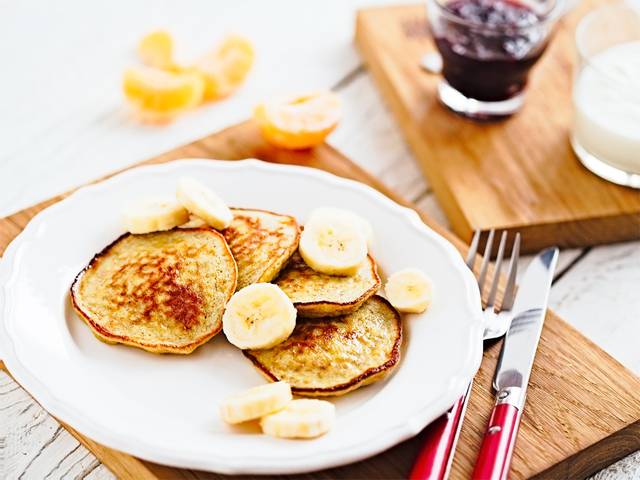Susie Burrell National Diabetes Week Interview

Leading Dietitians Tips and Recipes for National Diabetes Week
Did you know at least 2 million Australians have Type 2 diabetes or pre-diabetes; the condition in which the body is unable to optimally manage its blood glucose levels?
The risk associated with such a common condition is that we all become a little blasé about it. The truth is though, Type 2 diabetes has a number of long term health implications including blindness, poor circulation and kidney failure. Even more importantly, those at risk of pre-diabetes should have it diagnosed and managed early to ultimately prevent Type 2 diabetes altogether.
This week is National Diabetes Week (14 – 20 July) aiming to generate awareness of the condition and encourage people to have their risk of developing diabetes checked. Along with getting a proper assessment, there are a number of things everyone should do to help reduce the risk of developing diabetes altogether, such as improving your diet. Pre-diabetes is a state in which the body is having trouble keeping the blood gluc
ose levels as low as they should be, and while the levels are not as high as they are in Type 2 diabetes, unmanaged they will progress to Type 2 diabetes.
Signs you may have pre-diabetes include:
- experiencing sugar cravings
- carrying excessive (>20kgs) body weight - particularly in the abdominal region,
- experiencing extreme fatigue and bloating
- having a family history of Type 2 diabetes or gestational diabetes also puts you at high risk of pre diabetes.
So, if any of these descriptions sound familiar, get yourself off to a General Practitioner quick smart to have the appropriate tests to make sure you do not have pre-diabetes.
For those suffers of Type 2 or pre-diabetes, there are some important and easy changes you can make to your diet to help optimally manage your blood glucose levels:
1) Focus on portion controlled serves of good quality carbs such as wholegrain breads and cereals, fresh fruit, legumes and vegetables. Remember that ½ a cup or 1 piece of fruit is a serve of carbs and your meals will need at most 2 serves of carbs per meal.
2) Look for products such as cereal, yoghurt and sauces that clearly state they have 'No Added Sugar'.
3) Avoid sugary foods such as fruit juice, lollies, dried fruits, cakes and biscuits altogether.
4) Aim to include a minimum of 3 cups of vegetables in your diet each day.
5) Where possible leave 3-4 hours in between your meals and snacks.
6) Don't forget that adding protein to your meals will help to regulate blood glucose levels - for example, Greek yoghurt with oats, wholegrain bread with eggs or crackers with tuna or salmon.
7) Nutrient rich snacks that will help to keep your glucose levels controlled include cheese and crackers, nuts with a banana or a serve of plain yoghurt with berries.
8) Avoid drinks with added sugar such as soft drinks, energy drinks, vitamin water and smoothies.
9) Try and give yourself at least 12 hours without food overnight.
10) Walk as much as you can, especially after meals to help reduce your blood glucose levels.
Banana Nut Pancakes
Serves 1
Ingredients
½ cup cooked quinoa
2 egg whites
¼ cup milk 1 tsp. brown sugar
2 drops of vanilla essence
½ banana, mashed
¼ cup chopped walnuts
¼ cup Greek yoghurt
1 tsp. maple syrup
Method
Whisk quinoa with egg whites, milk, brown sugar, vanilla and banana.
Coat fry pan with a little olive oil or butter and divide batter into 3 pancakes.
Cook each pancake for 3 mins each side.
Serve with Greek yoghurt, a sprinkle of walnuts and a drizzle of maple syrup.
Interview with Susie Burrell
Question: What diet do you recommend for those with Type 2 diabetes?
Question: Why are bananas vital to the diets of those with Type 2 diabetes?
Susie Burrell: Nutrient rich bananas like all wholefoods are the best type of natural carbohydrate to add to the diets of those with Type 2 - they add natural sweetness, fibre and a range of nutrients in a portion controlled serve of carbohydrates.
Question: What foods are important to include in our diet if we believe we are at risk of Type 2 diabetes?
Susie Burrell: Lots of vegies - at least 2-3 cups, a couple of pieces of fruit, good fats such as olive oil, nuts and seeds and minimal processed carbs such as white bread, rice, pasta and sugars.
Question: How can we be sure our meals are portion controlled?
Susie Burrell: The stomach is roughly the size of two small fists so ideally meals will be no larger than this.
Question: Can you provide examples of nutrient rich snacks?
Susie Burrell: A banana with 100% nut spread is fantastic - or cheese and crackers, plain yoghurt with 1/2 banana or a handful of nuts with a piece of fresh fruit.
MORE





